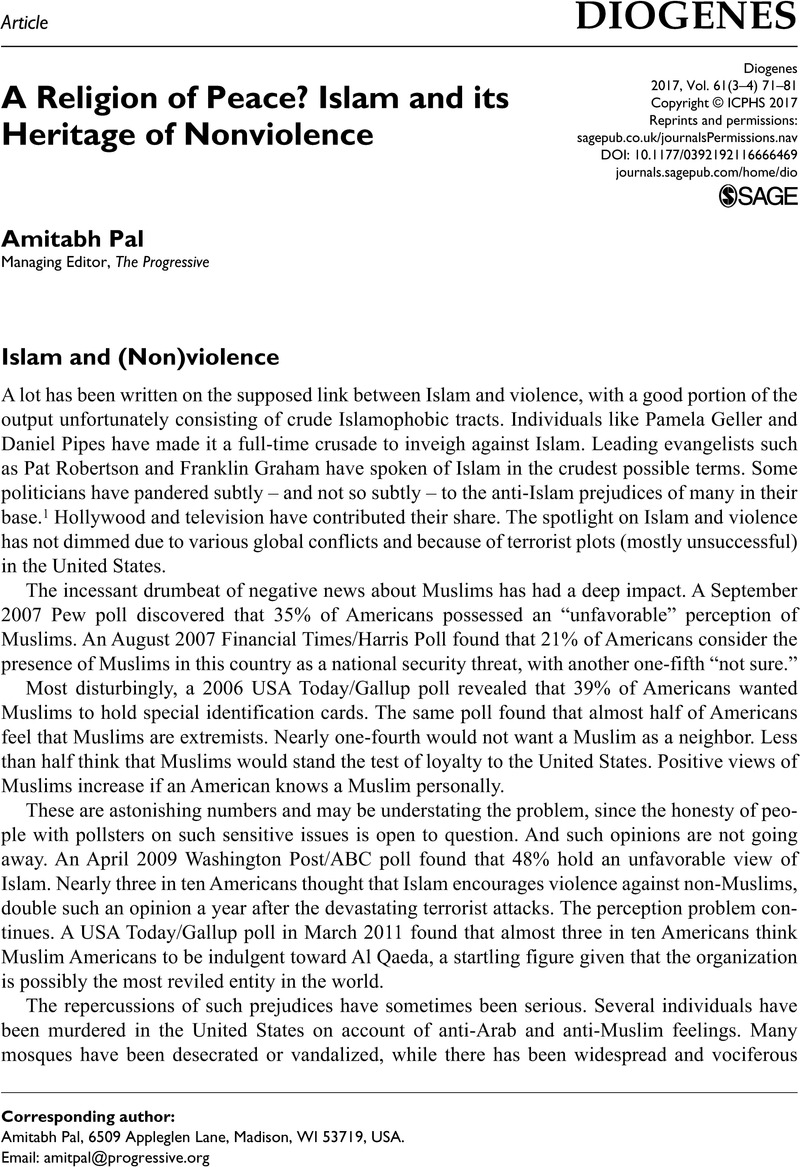Article contents
A Religion of Peace? Islam and its Heritage of Nonviolence
Published online by Cambridge University Press: 01 January 2024
Abstract

- Type
- Articles
- Information
- Diogenes , Volume 61 , Issue 3-4: Theories and Practices of Non-Violence , August 2014 , pp. 71 - 81
- Copyright
- Copyright © ICPHS 2017
References
- 1
- Cited by


